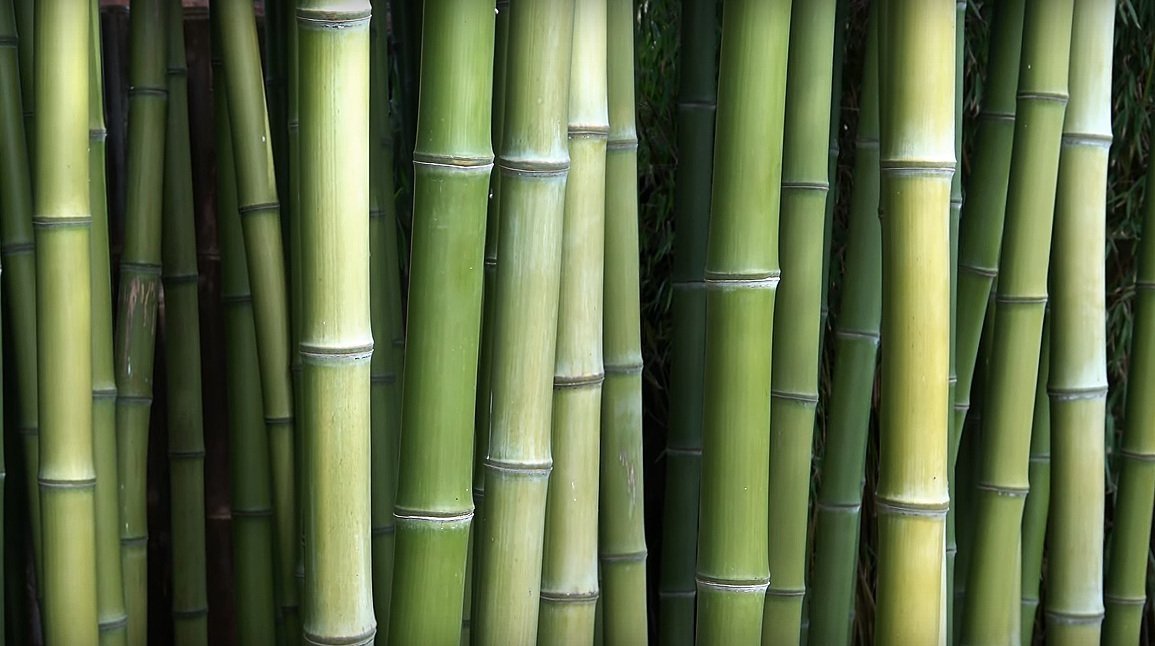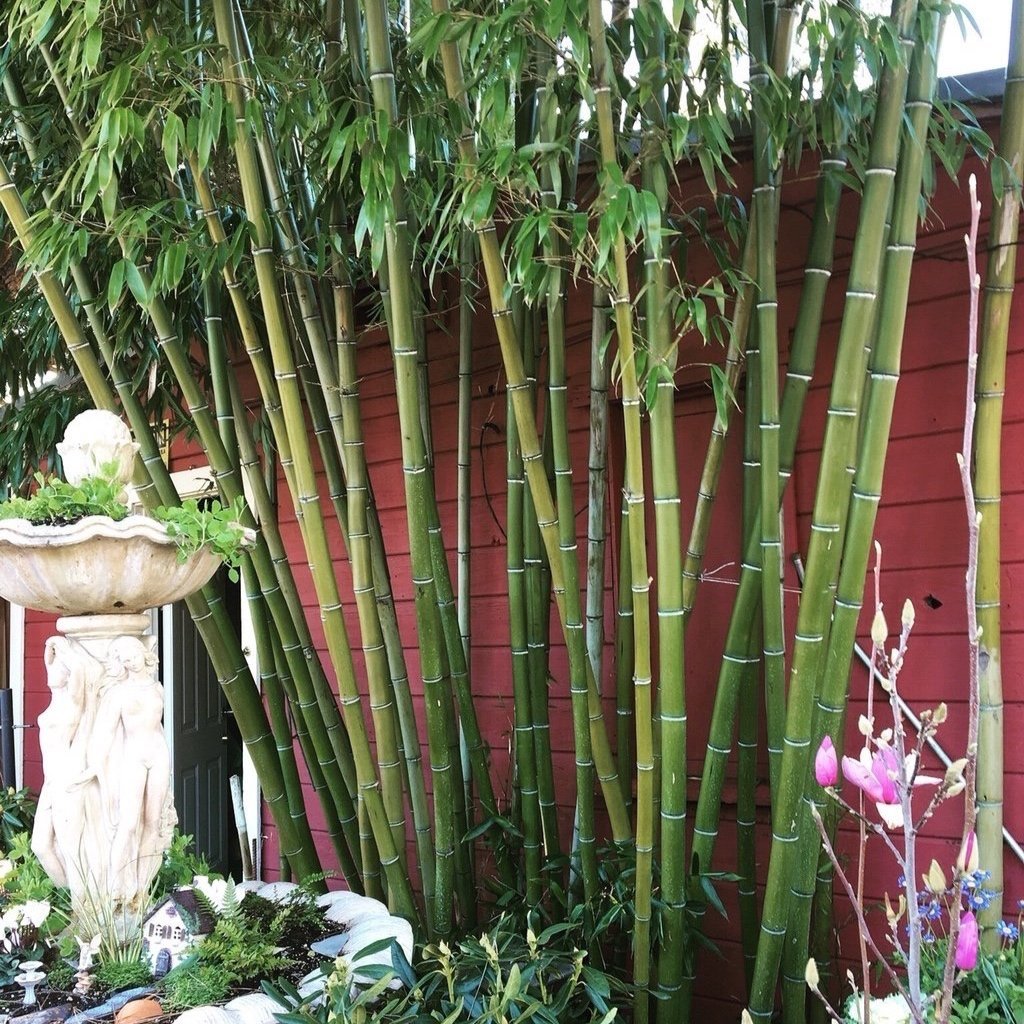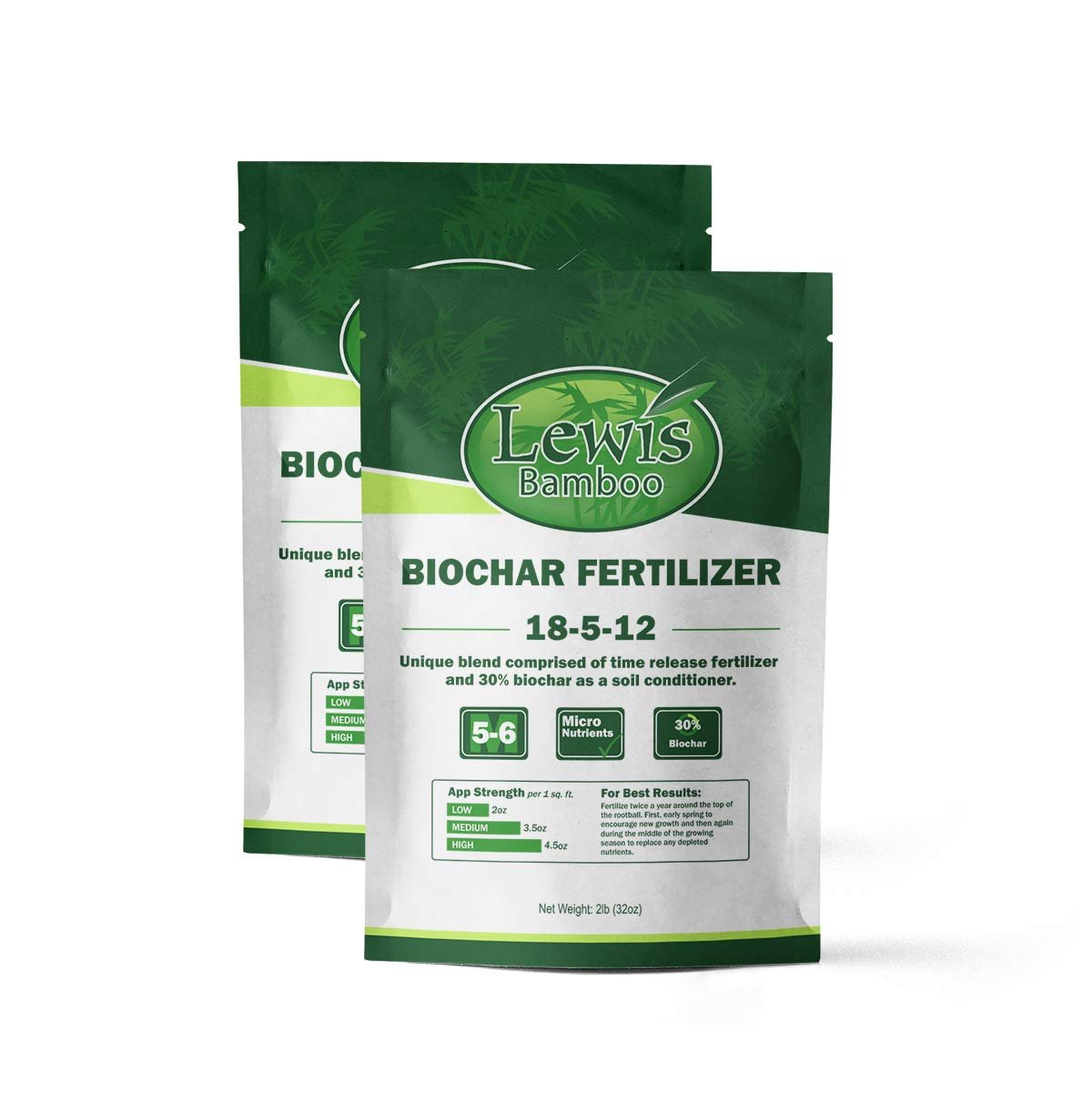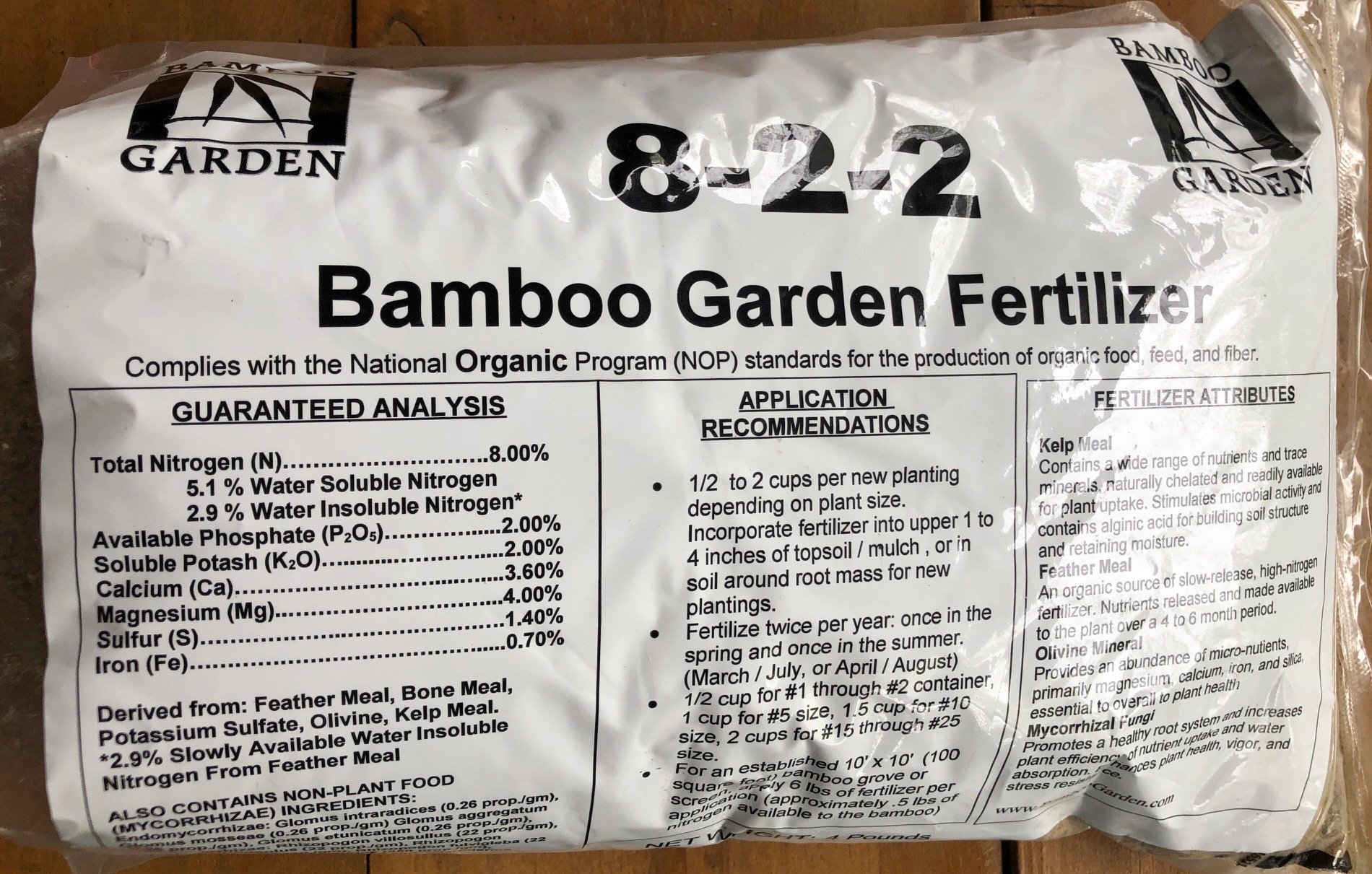
Bamboo Care Tips
Bamboo enhances outdoor spaces with its rapid growth and dense foliage, a perfect choice for privacy screens and patio shade. Naturally resilient and low-maintenance, it’s a great choice for novice gardeners, but effective containment is essential to control its vigor.
Steps for Bamboo Installation:
Select the Right Variety: Decide between running and clumping bamboos according to your available space.
Plan for Containment: Use root barriers or raised containers for running bamboos to prevent unwanted spreading.
Prepare the Site: Ensure the soil is well-drained and enrich it if necessary.
Planting: Follow proper spacing guidelines; typically, clumping bamboos can be planted closer together than running types.
Care and Maintenance: Regularly water and fertilize your bamboo to encourage healthy growth. Pruning may be required to maintain shape and size.
By following these steps, you can create an attractive bamboo screen that provides privacy and shade in your outdoor area. Choosing the right type for your area and purpose is as important as proper care. Here are some basic tips for healthy, attractive bamboo.
We stock the best varieties suited for the Seattle - Puget Sound and are happy to help you decide what will work best.
The basics
-
Bamboo can be planted anytime of year in the Seattle/Puget Sound area. Preferably, by the beginning of Spring when the rhizomes begin to spread and before new shoot and cane production begins.
Attentive watering is required during the dry summer and fall, especially the first year while it’s rooting in. Tall bamboos may need to be staked for 6 months during windy seasons.
-
Running bamboos, especially Phyllostachys species, typically thrive in full sun to partial shade, benefiting from at least six hours of direct sunlight daily.
Clumping bamboos, like Fargesia species, prefer more shade and can tolerate dappled sunlight, making them ideal for partially shaded areas. It's important to consider these light conditions when selecting bamboo for your garden to ensure healthy growth and optimal performance.
Bamboo can likewise thrive in the shady conditions typical of the Pacific Northwest due to its adaptability and resilience. Many bamboo species have developed the ability to photosynthesize efficiently even with limited sunlight, allowing them to grow under the canopy of larger trees or in partially shaded areas.
-
Bamboo needs consistent moisture, especially when young or newly planted, 2-3x/week, adjusted for rainfall. Well-drained soil is as important; soggy roots rot and can drown the plant.
Once established, bamboo is generally drought tolerant, but still benefits in vigor and appearance, especially in pots, containers and barriers.
-
Bamboo prefers loamy, well-draining soil typically found in Seattle and a loose, mulch heavy upper 8” layer to encourage rhizome spread. It can adapt to nuanced conditions, so long the soil drains well.
Potted and planter box bamboo benefits from a balanced time-release fertilizer applied 2-3x a year. There’s a handful of bamboo-specific blends specifically formulated for lush foliage and strong cane development. Look for something in the 18-5-10 ratio.
Large groves benefit from fertilizer or broadcasting a 1/2” or so of compost over the existing canes.
Soil
-
Pots and containers
Mix equal parts potting soil to red bark mulch with a handful of compost or fertilizer for a dependable bamboo blend. Gardeners can replicate their vegetable producing soil, especially so if you intend on eating the shoots. We generally have a blend on-site to offer if you need extra for planting.
Too sandy or mulch heavy = poor rhizome development
[Soil Calculator.com is a handy website to figure out how much you’ll need] -
It may be more practical to import a load of soil than haul the amount of bags it takes to fill large containers. Blend 75% aged red cedar bark with 25% sand or sandy topsoil blend. To that blend in a large bag of compost into the upper 8” of soil.
Yard debris (sticks, clippings, etc.) can be layered in the middle to fill volume and provide future nutrients. Bamboo roots only need 20” of depth. Filling the bottoms of deeper tanks or planters with sand ensures good drainage.
Contact us for associate expert referrals that can deliver soil and plant bamboo.
-
Bamboo favors the general soil composition of the Puget Sound. Ideally, it prefers a sandy lower 10” layer for the small water roots to grow into, topped with a compost heavy, mulched upper layer for the rhizomes to spread. Prepare the space between new plantings to encourage the rhizome spread and create a hedge.
The one condition it doesn’t like is boggy/ perpetually wet soil, especially during the winter. Phyllostachys heteroclada, atrovaginata and rubromarginata are among exceptions that can tolerate prolonged wet soil.
To plant bamboo, take it out of the pot and dig a hole that is twice as wide. Mix some compost into the soil around the hole (2-3 feet). Do not untangle the roots. Adding 1-2 inches of bark chips or mulch on top keeps moisture in and supports the growth of the upper rhizome layer.
Pruning and Thinning
-
Bamboo grows new canes each year, reaching full height in three months. If a cane is cut, it won't regrow. You can manage height by trimming the canes twice a year, but this is less practical for large groves. Best to choose a suitable variety for the height and space requirements.
Cutting 1/4 of the height off unwanted arching canes helps to straighten them up.
-
Carefully removing smaller, older bamboo canes enhances its appearance. You can cut out thin canes at ground level when the larger, mature ones are fully grown. Dried canes that have turned to tan wood can likewise be clipped out.
-
Bamboo branches can be trimmed back to size or removed completely to clear paths and sidewalks. Removing some branches and canes helps improve air flow, makes space for future growth, and lowers water and nutrient use. Some varieties of bamboo are branchier than others, some weep, some upright, sparse, dense, again a nod to select the best variety for the job
Seasonal: Preparing for Spring
-
Bamboo generally doesn’t need to be watered until Spring temperatures rise into the 55º+ range, given our rain patterns.
The general rule is to water when the top 1” of soil is dry to the touch or between lengthy dry spells.
-
Now is a great time to prune any damaged or older canes and branches. Doing so promotes better air circulation to discourage pests and makes space for new growth. Remove any old and deadened, wooden colored branches and canes. Cut canes at or slightly below ground level to prevent unsightly stubs.
Many bamboos produce canes that arch from the weight of top heavy clustering leaves. If you’re trying to keep them more upright, snipping off the top 1-2’ is usually enough to straighten the canes. Elongated branches can likewise be cut back and permanently removed from the cane. (Once snipped the tips and branches do not grow back.)
-
A final application of fertilizer will fortify your bamboo going into winter and increase the potential for stronger, colorful new canes next year. Bamboo specific formulas can be found online; conventional, balanced time release fertilizers (Osmocote, Plant Magic, etc..) likewise work great. Larger plantings can equally benefit from a broadcasted 1-2” layer of compost. It’s normal for the oldest sets of leaves to turn yellow and drop at the end of summer.
-
This is the time of year to inspect the perimeter of the barrier looking for any surfacing rhizomes (roots) trying to cross. Further prevent this by removing any adjacent leaves to prevent them from building a layer next to the barrier. If you’re employing an open barrier/ trench method, pick through the sand trap and prune out any rhizomes.










